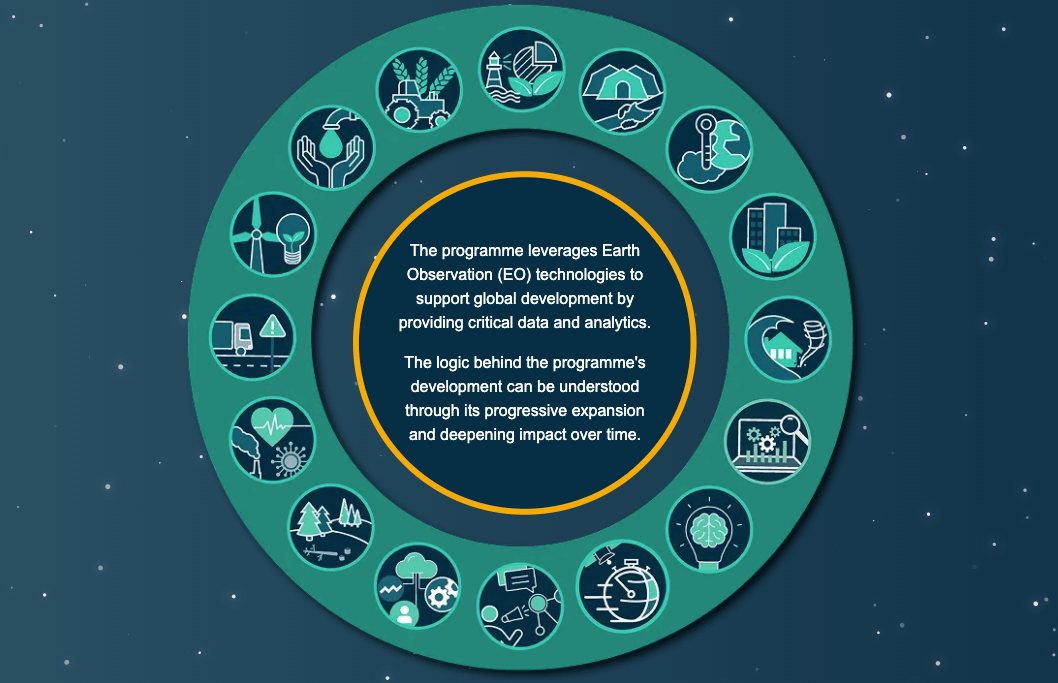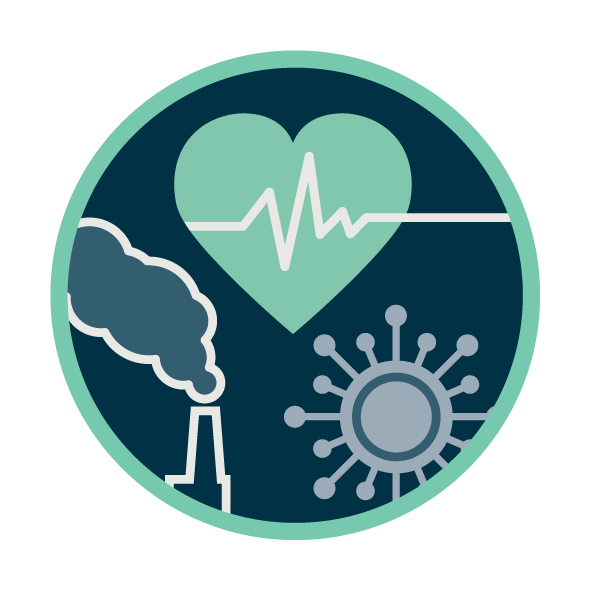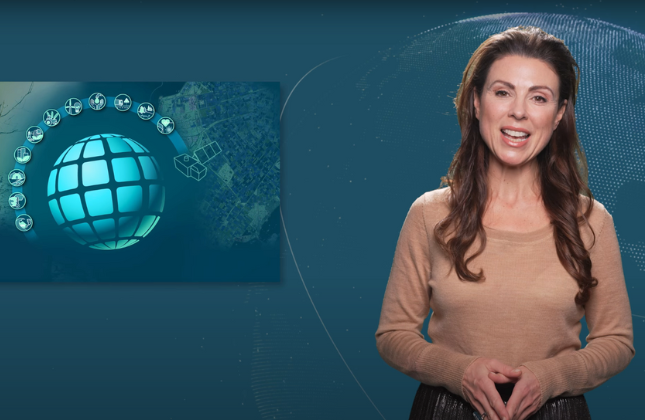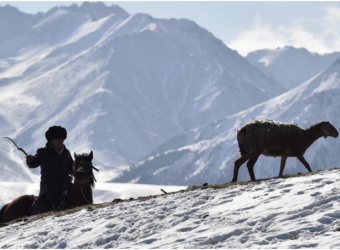The desert locust poses a severe threat to agriculture in East Africa, with the potential to decimate croplands through swarms numbering in the millions. The infestation between 2019 and 2022 – the worst in 70 years – underscored the urgent need for enhanced monitoring, control and early action to prevent future outbreaks. A crucial part of this effort is the identification of locust breeding patterns to anticipate and disrupt the locust lifecycle before swarms escalate and destroy vast quantities of crops.
Within the ESA Global Development Assistance (GDA) programme, under the Fragility, Conflict and Security thematic activity, the implementing partner company Vlaamse Instelling voor Technologisch Onderzoek (VITO) developed an initial Earth Observation (EO)-based locust monitoring service in collaboration with Intergovernmental Authority on Development (IGAD), within the framework of the World Bank‘s Emergency Locust Response Project (ELRP). VITO provided both a mapping service for egg-laying (breeding) areas and a mapping service for cropland damage. Upon IGAD’s request, development continued under ESA’s GDA Agriculture thematic activity, with a particular focus on monitoring hopper habitats, still under the Word Bank’s Emergency Locust Response Project framework.

View on the East African Hazards Watch Platform. Colors indicate risk of desert locust, red points indicate observations of adult desert locusts and lines indicate projected swarm movement.
This model was presented as a success story during the World Bank’s Fragility Forum 2024 (FF2024) in Washington DC, under the theme Adapting and Innovating in a Volatile World. It was also highlighted during a five-day regional cooperation meeting convened by IGAD in July 2024, focused on combating transboundary pests across Djibouti, Ethiopia and Somalia, aiming to build on achievements under the World Bank-supported Emergency Locust Response Project. Following its success at FF2024, the model was further showcased during the ESA-hosted GDA Industry Day in December 2024, as part of ESA’s GDA Agriculture thematic activity engagement in East Africa. The success of this intervention demonstrates how ESA GDA activities are promoting the adoption of Earth Observation-based services by International Financial Institutions (IFIs), such as the World Bank, enabling more proactive and data-driven responses to environmental and agricultural threats in fragile and conflict-affected regions.
Mapping cropland damage
Using a combination of vegetation indices from Sentinel-2 imagery and ESA WorldCover data, VITO detected significant drops in vegetation development, producing a spatially explicit map of cropland damage caused by locusts in 2020. The analysis revealed that up to 8.61% of IGAD’s cropland area experienced severe desert locust damage, with the most extensive impacts recorded in Eritrea, Ethiopia, and South Sudan.
Crucially, VITO ensured that declines in vegetation were not attributed to droughts, which are frequent in the region, by using precipitation datasets to filter out meteorological effects. Additionally, a phenology identifier was applied to exclude natural harvest cycles.

Estimated % of cropland damage by desert locust in 2020 for IGAD.

Estimated damage done by locust on cropland in 2020 for Ethiopia. The map shows main damage observed in Central Ethiopia, Tigray, and Amhara.
Understanding hopper habitats
A proactive approach to locust control requires early identification of habitats suitable for hoppers, the ground-bound juvenile stage of locusts. Targeting hoppers is particularly effective, as they are not yet capable of flight.
To support this, VITO developed a Maximum Entropy (MaxEnt) model integrating static environmental indicators such as elevation and soil texture with dynamic datasets, including meteorological data, Sentinel-3 NDVI data, and Copernicus Global Soil Water Index data.
Ground observations of hoppers sourced from the FAO Desert Locust Hub were used to train the model. Soil texture emerged as a critical determinant, as locusts prefer to lay their eggs in sandy-loamy soils.

Soil texture diagram indicating the preferred soil textures by hoppers. Points indicate measured soil texture (percentage sand, silt, clay) at locations with hopper observations. The points cluster at high sand/silt values, indicating that hoppers favour sandy loamy soils. Figure from Dandabathula et al. (2023) – European Journal of Ecology
A dynamic monitoring model
Leveraging this information, VITO created a dynamic service providing updated hopper suitability maps every 10 days, dating back to 2017. This service was developed using OpenEO functionalities and data catalogues.
Although initially developed in close collaboration with IGAD, the model also accounts for the Arabian Peninsula and surrounding regions, recognising that desert locusts cross borders, particularly across the Red Sea.

Example of the modelled hopper suitability product at a 10-daily time interval. Red values indicate high suitability for hoppers, blue indicates low suitable environmental conditions.

Temporal profile of hopper suitability for the Sanaag region in Somalia indicating highest suitability for desert locust between November-April.
The outputs are being integrated into the East Africa Hazards Watch (EAHW) platform, a publicly accessible tool frequently used by policy advisers, international organisations, and risk managers.
By identifying critical periods of high hopper habitat suitability, this dynamic model enables authorities to plan ground-control interventions well in advance, targeting locations and times when the chances of effective control are highest.
Next steps
Since the desert locust model was transferred by the implementing partner company VITO to the IGAD, its integration into the early warning system is progressing steadily, with the optimisation of the pest watch system nearing completion. This will enable near-real-time monitoring on a regional scale. In parallel, efforts have commenced to fine-tune the model to assess habitat suitability for other transboundary pests, such as Quelea birds and Fall Armyworm.
While the World Bank’s Emergency Locust Response Project is scheduled to conclude in June 2025, discussions are ongoing to explore how selected activities could be sustained and expanded under future initiatives with IGAD. Early warning, including forecasting, modelling and capacity-building, remains a strategic focus and is expected to build further on the outcomes achieved through this ESA GDA Agriculture thematic activity.


















